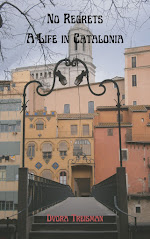
Chagall came from a family of religious Hassidic Jews, and although as an adult he was not observant, he remained tied to his Jewish roots. He married, Bella, the woman he fell in love with as a young man, and adored her until she died in New York, soon after the end of World War II. She was from the same background and indeed the same town as he and during her life she served as his muse, fostering memories and connections to the old world that they had both left behind.
Chagall went to live illegally beyond the pale (the pale of settlement within which Russian Jews were required to live) when he went to St. Petersburg to study art. He and Bella left Russia after the Revolution, lived briefly in Germany and then settled in France. When Jews came into danger in France during the World War II occupation, the Chagalls managed to leave Europe and go to New York where they stayed until the War was over. Of all the places he lived, Chagall felt the most out of place in the U.S. (for cultural and artistic reasons), and the most comfortable and assimilated in France. But it seemed that he never felt totally at home anywhere and never lost his longing for Russia. In Russia he was considered suspect for not following the painting style promoted by the Party. In France he was accepted as an artist, but when French anti-Semitism flared up during the occupation, he came close to becoming a victim. He visited Israel more than once but never felt comfortable there either. It even took some doing to get him to design the windows for Hadassah as he felt that Israelis had no appreciation for art. In the end, France was where he chose to live for most of his life. That was the place where art was appreciated and where he could best be himself and an artist.
To become a painter he needed to go to Paris, but his heart was always in Russian, in Vitebsk, the town he came from. Vitebsk appears repeatedly in many of his paintings as does Bella. He painted her repeatedly during her lifetime, during the years he was with his lover Virginia, and during the years he was with his second wife Vava. He never stopped painting Bella. Vava became extremely important in his life, but Bella remained with him always.
I was very moved by Chagall’s devotion to Bella and his identification and love of his homeland. He drew on his roots all his life; without them there would have been no art. I looked him up in the online encyclopedia Wikipedia where he was said to be a Russian-French artist. They somehow managed to overlook that underlying his passports, he was Jewish, and that was the most consistent and defining element of his art. There were other Jewish artists at that time such as Jacques (Chaim) Lipchitz, Amedeo Modigliani, or Chaim Soutine, but theirs isn’t Jewish art. To a large extent, our image of what Russian stetl life looked like comes from Chagall paintings – at least mine does.
I visited Chagall’s museum in Nice, conveniently located in Cimiez, near my hotel, expecting to see a fiddler on a roof and circus images, but instead saw huge Biblical canvases. I like to buy CDs to play at home and remember my travels with and in the museum’s gift shop I found two. These two have turned out to be favorites.

Writing to a friend while living in France in 1929 Chagall said, “There is not a single Jew here, or even a Russian. So we feel our Jewishness even more…” I think that was an exaggeration for in fact France had both Russians and Jews. But I know how he felt.









Thanks for that very informative biography of Chagall. He is one of my favorites also.
ReplyDeleteWhen you feel like you don't fit into your environment it can give you a unique perspective of that place. I think you have that Dvora.
And, happy birthday!
Thank you for this informative post. Artists can touch our souls and leave us considering their souls as part of our own. I feel that way about Van Gogh.
ReplyDelete